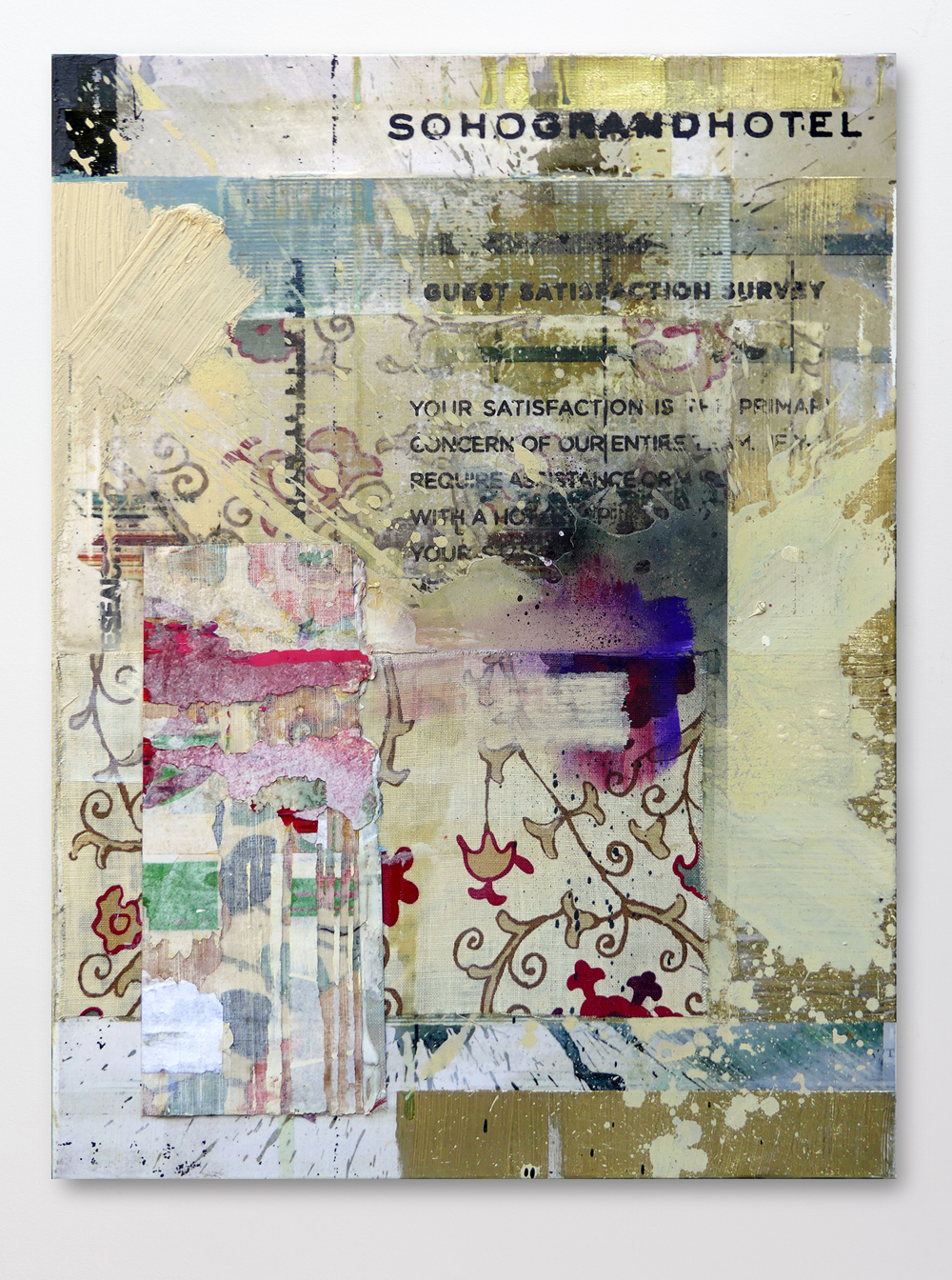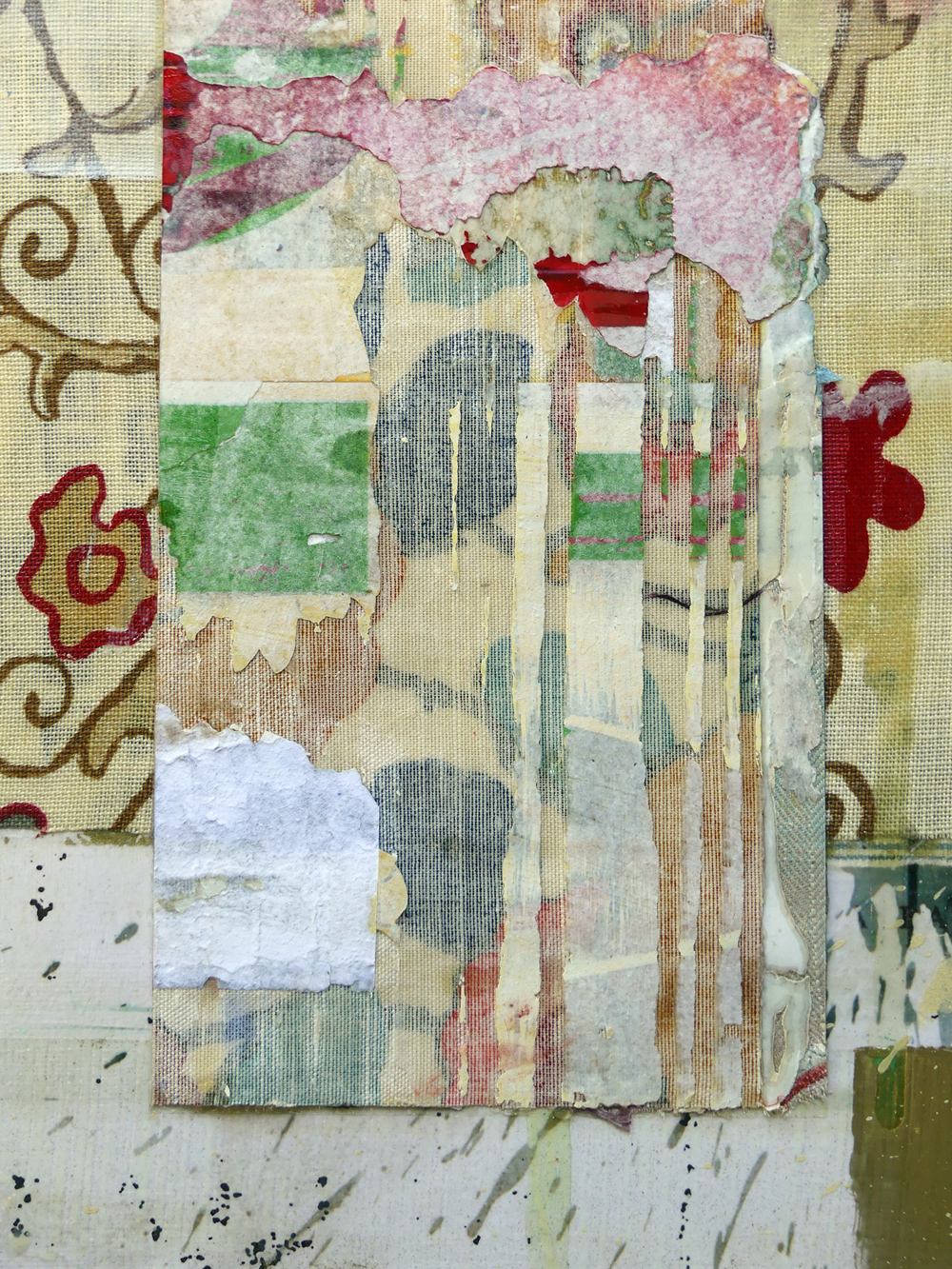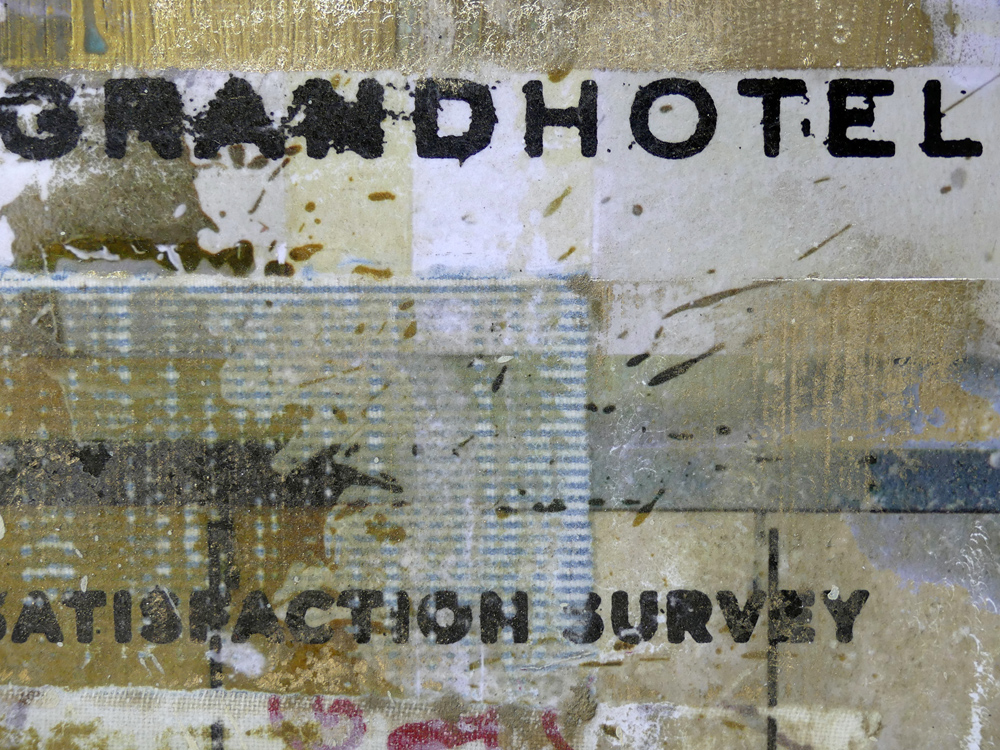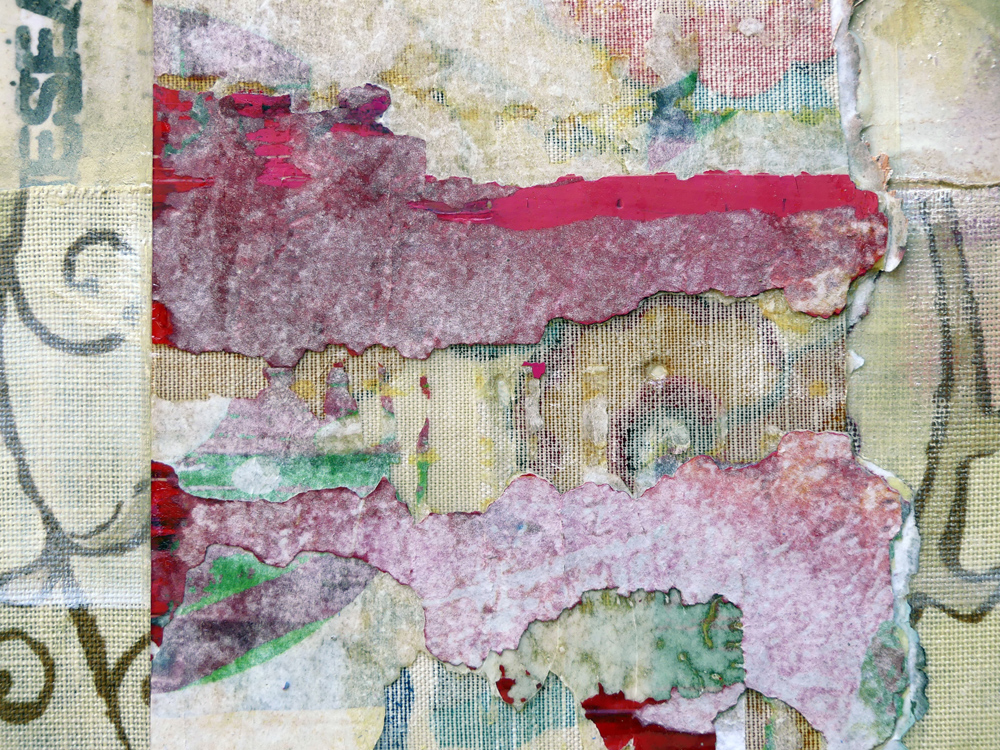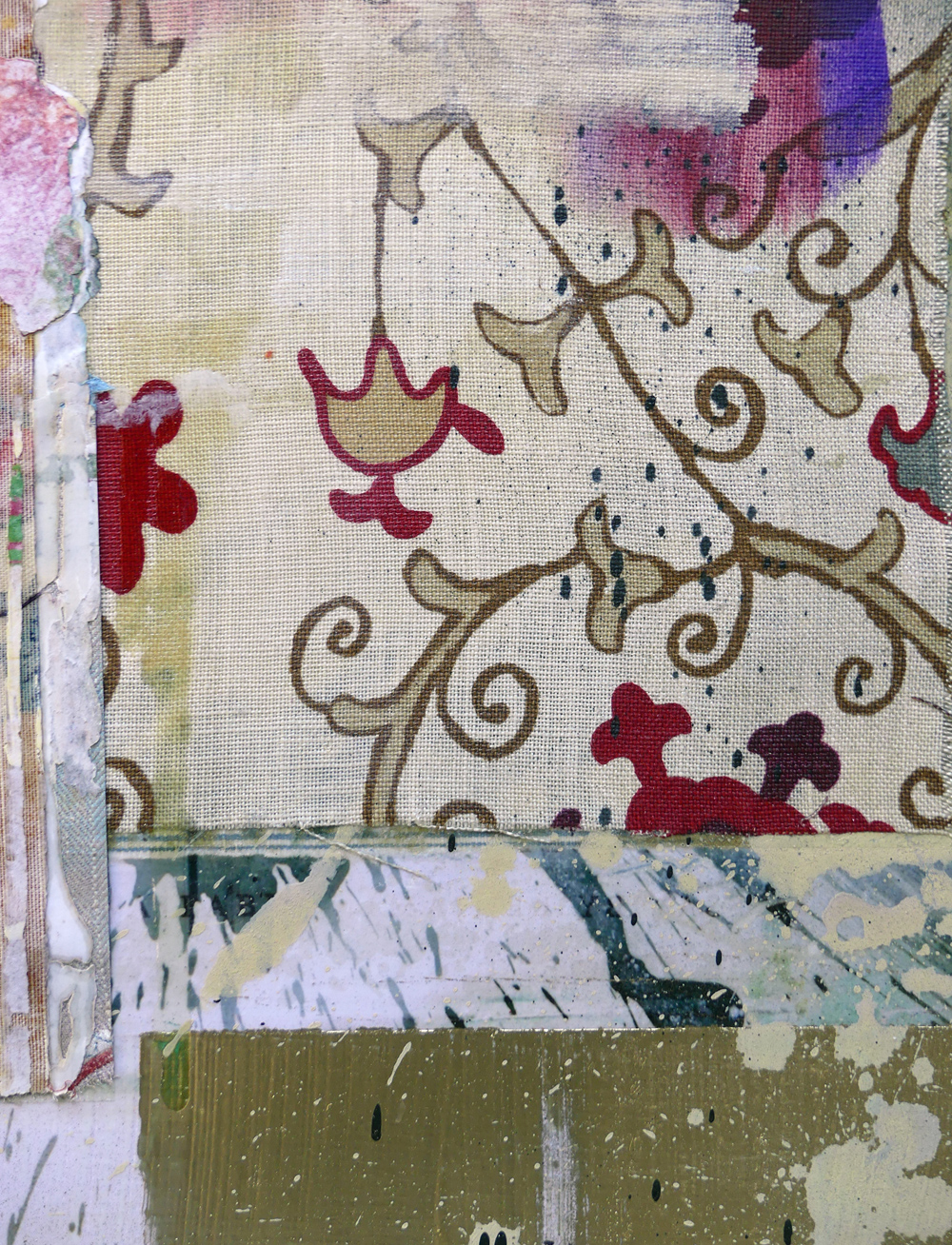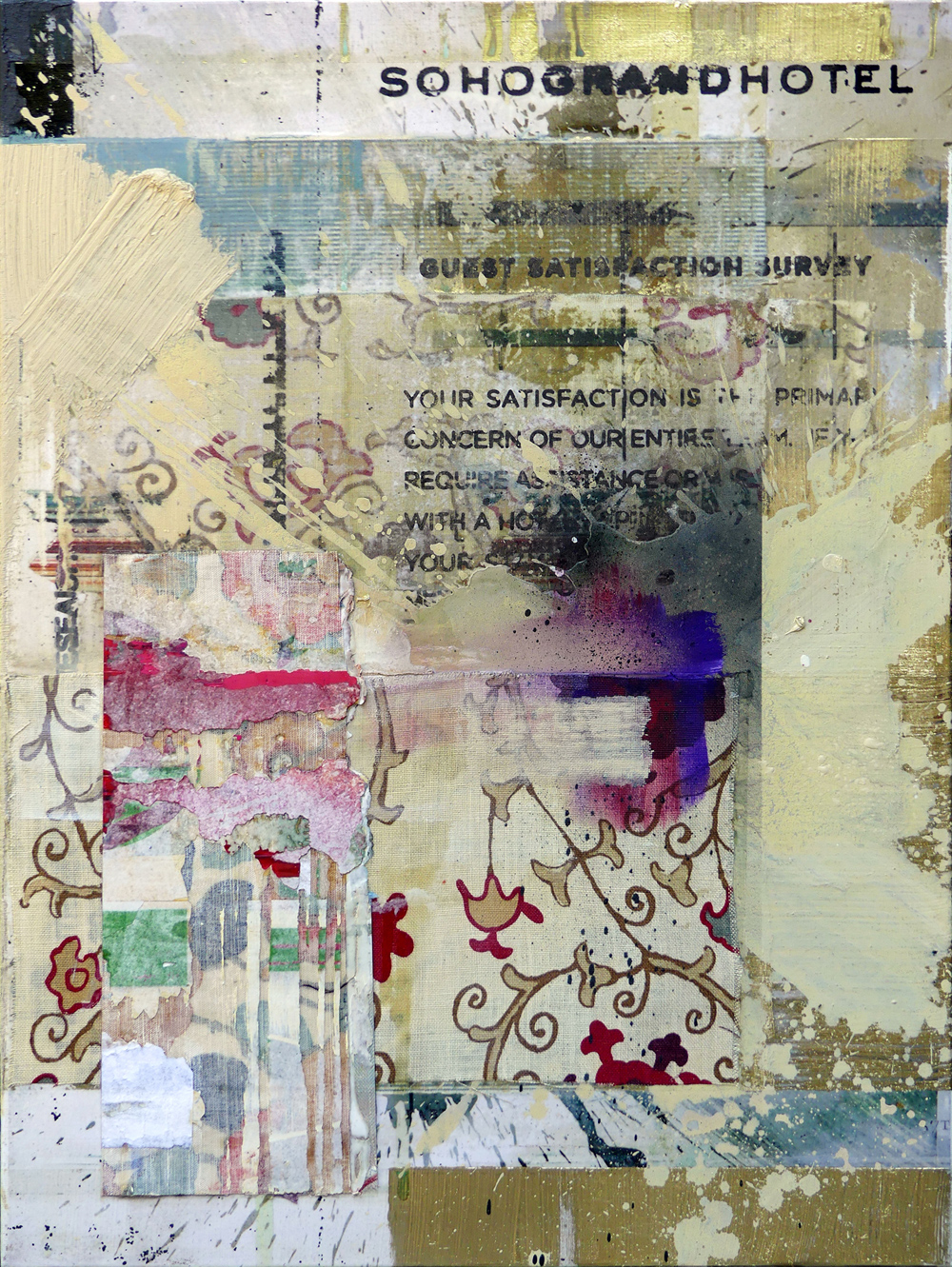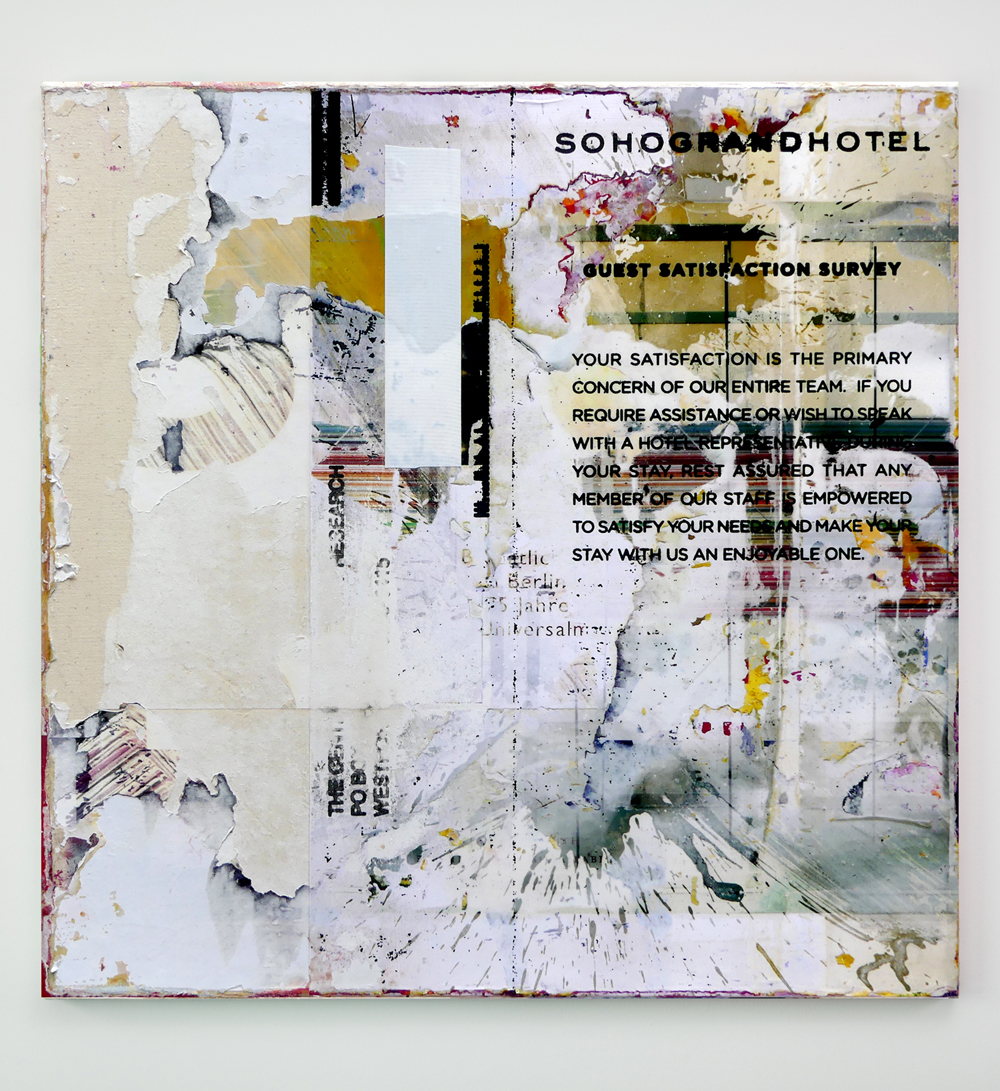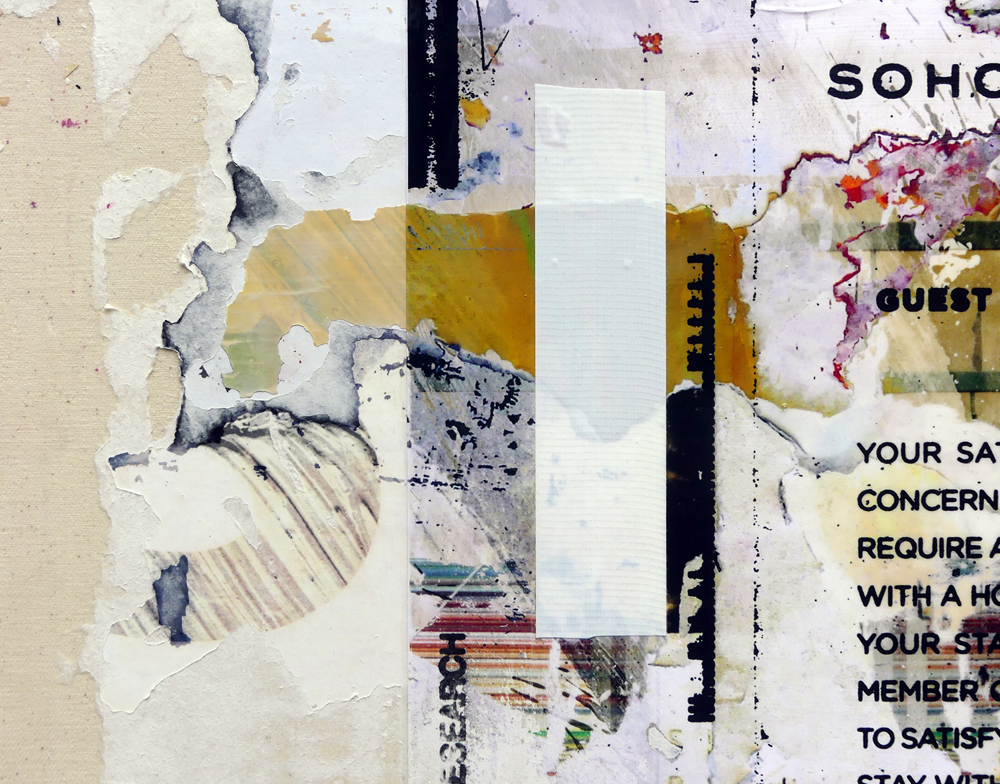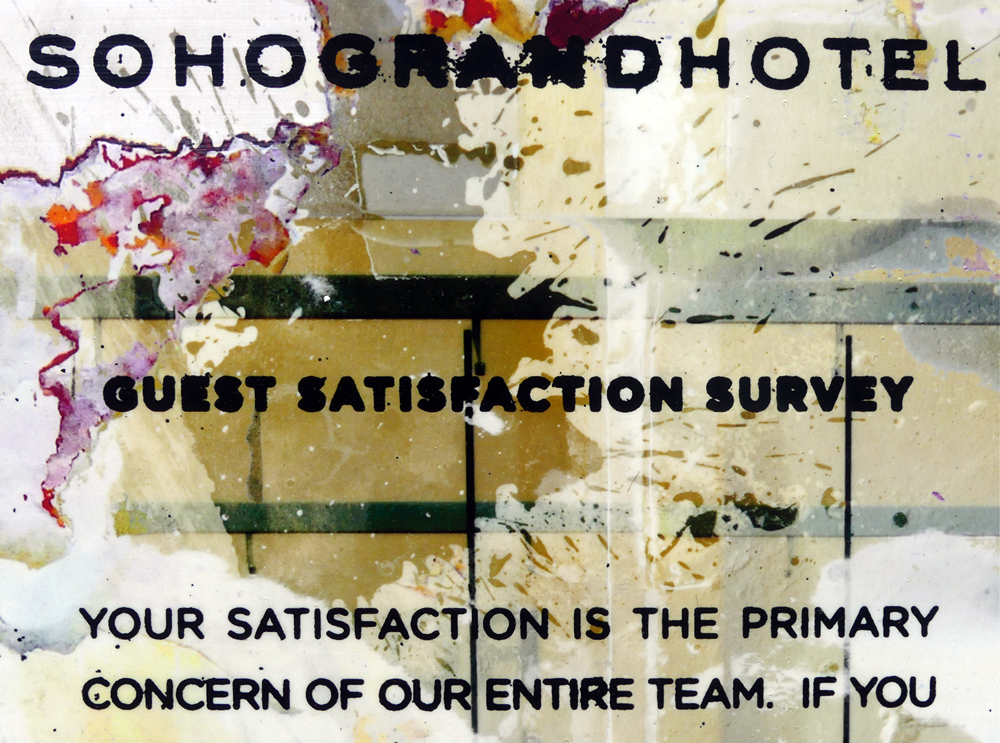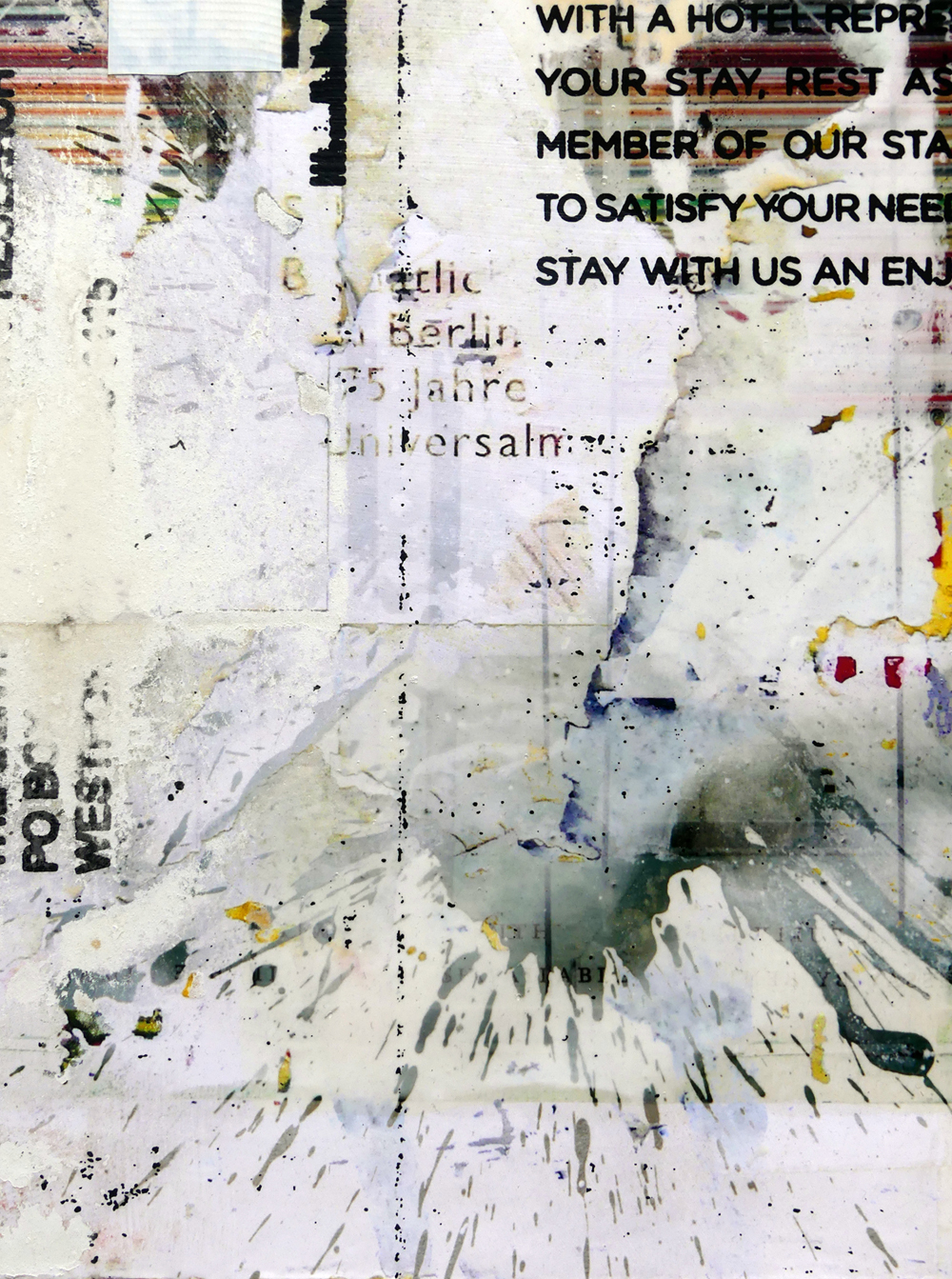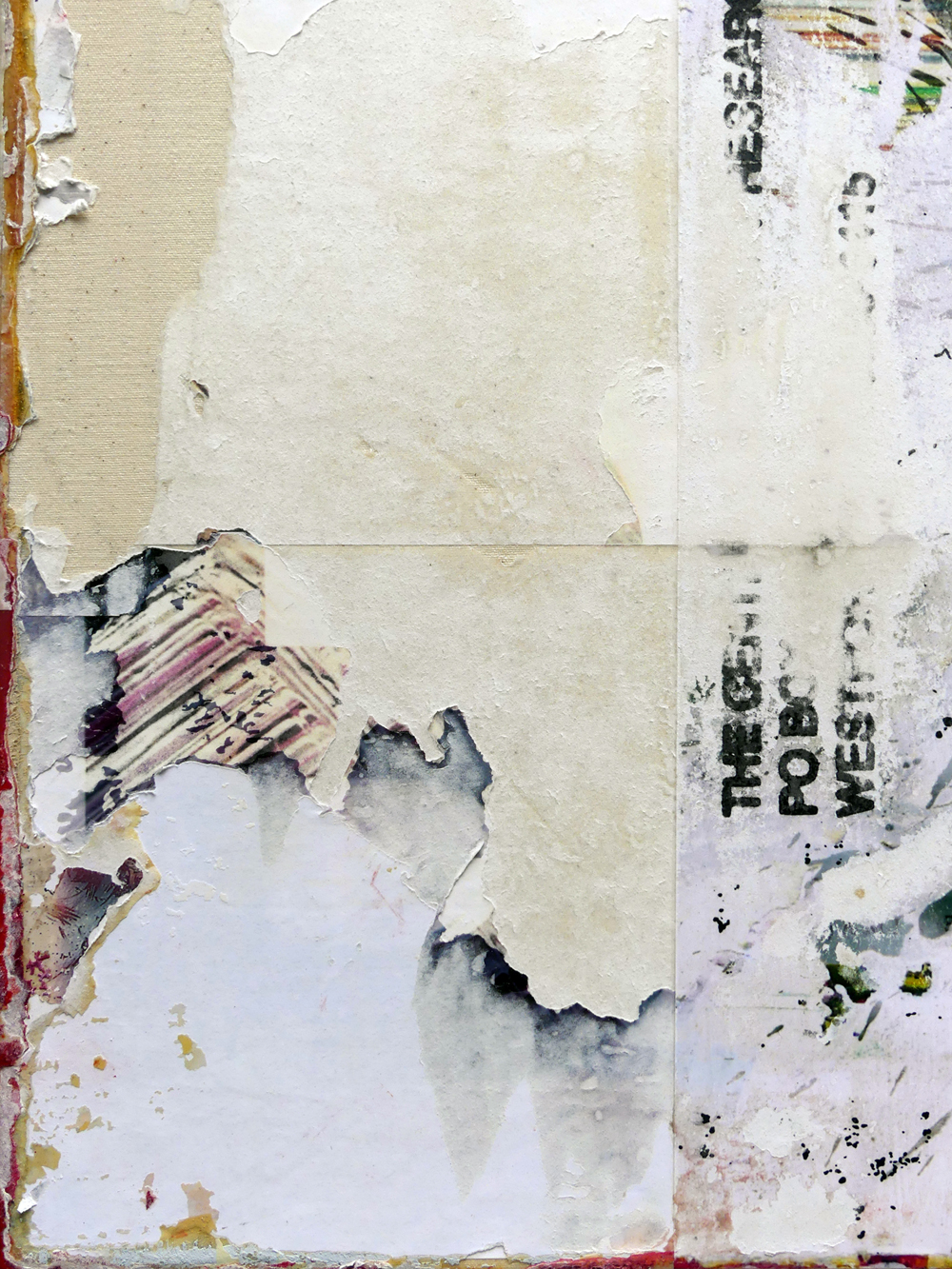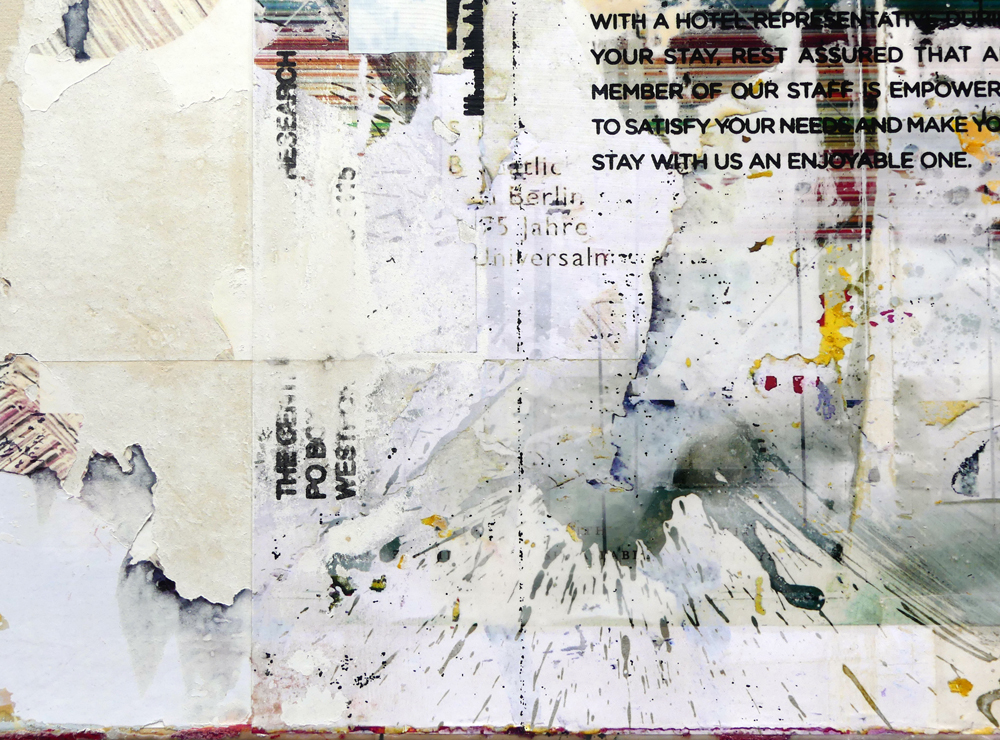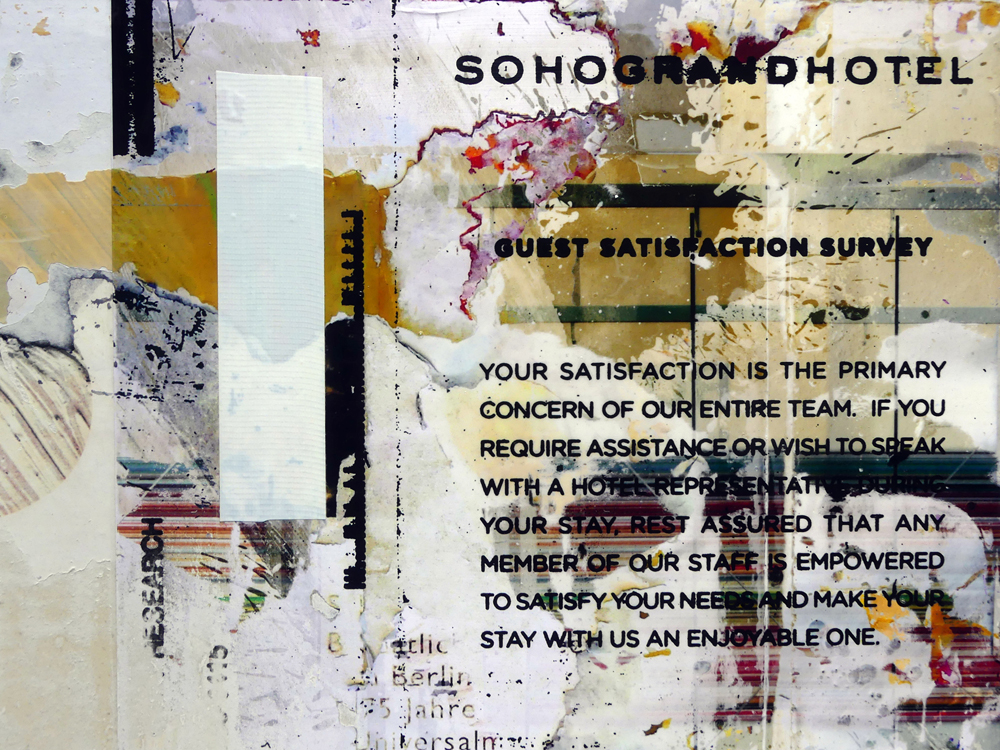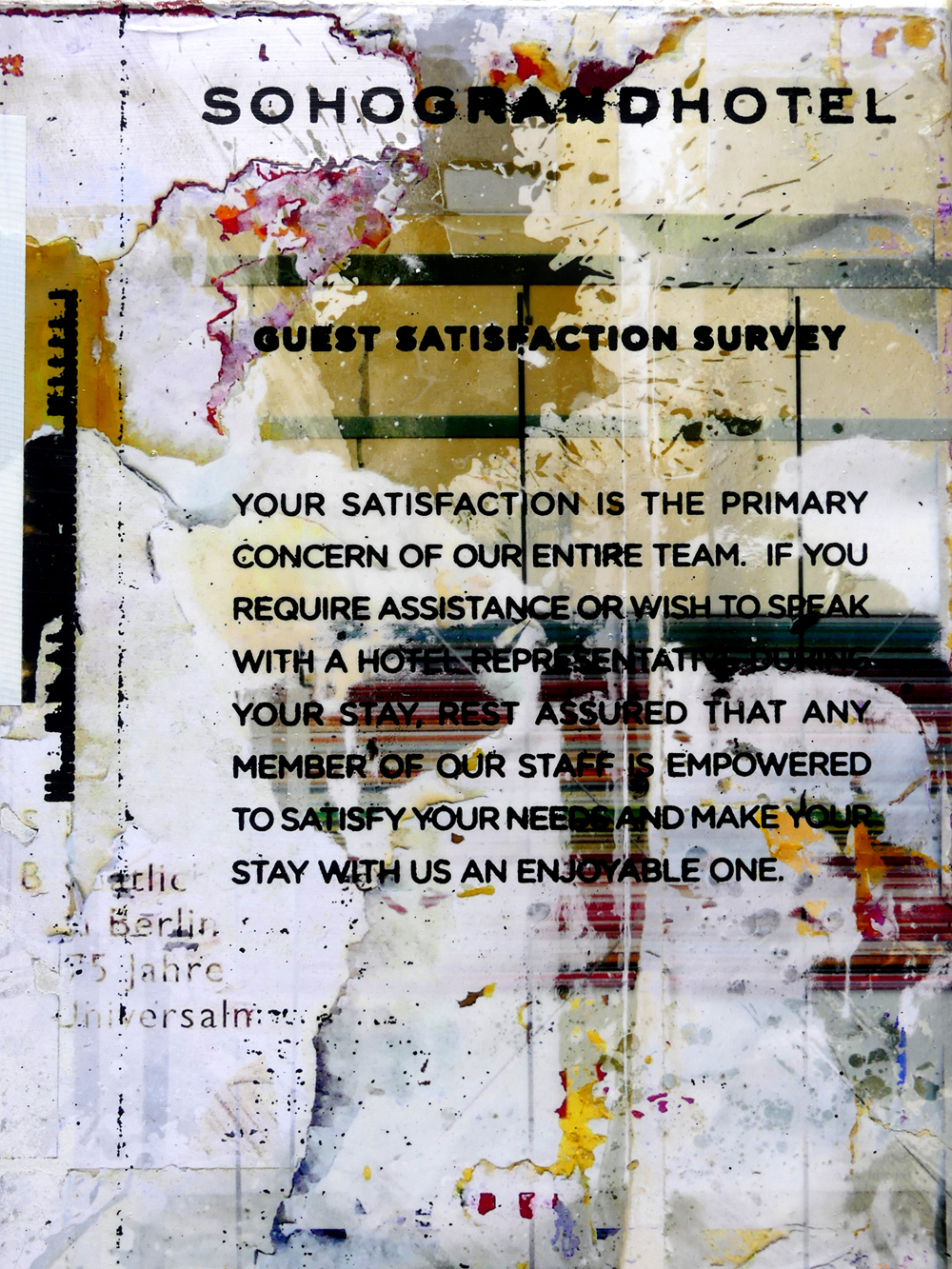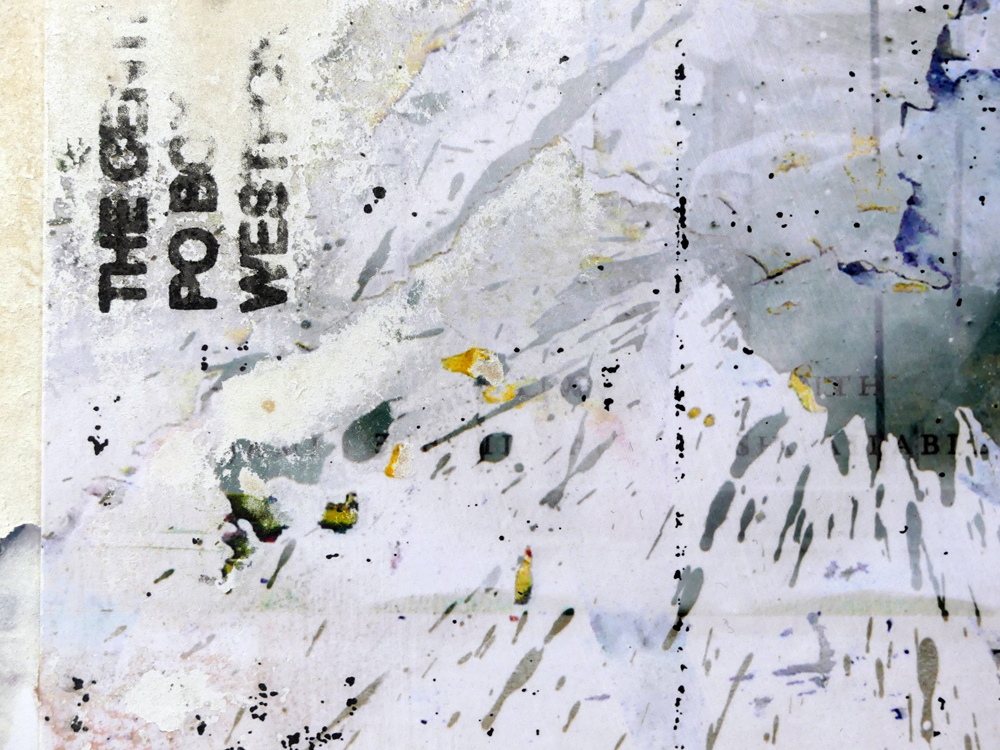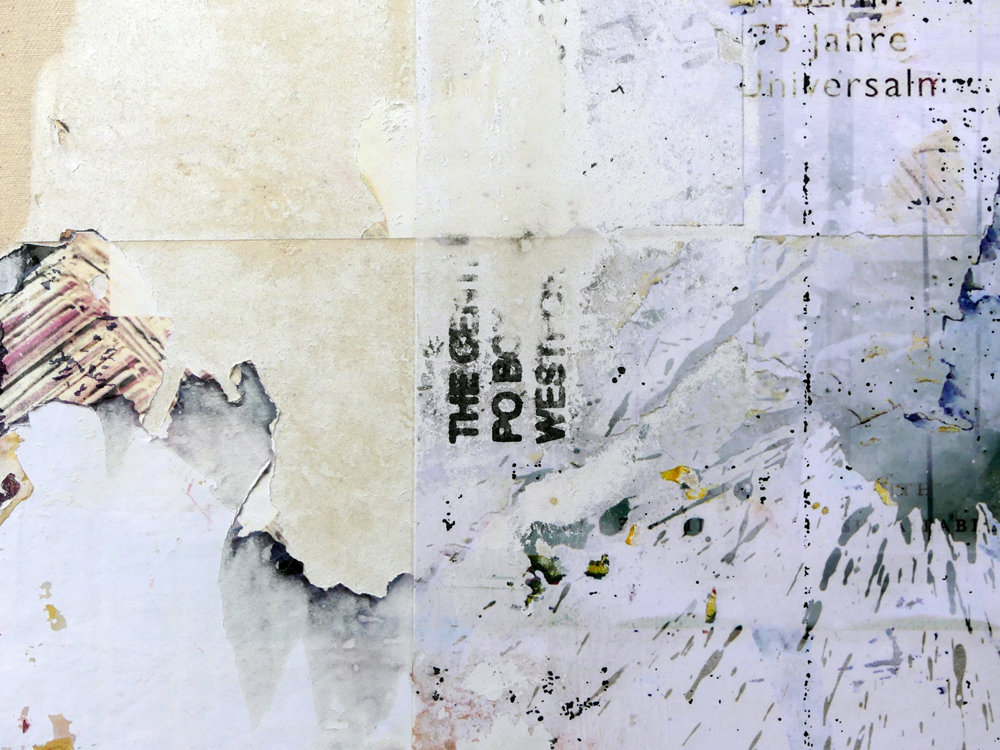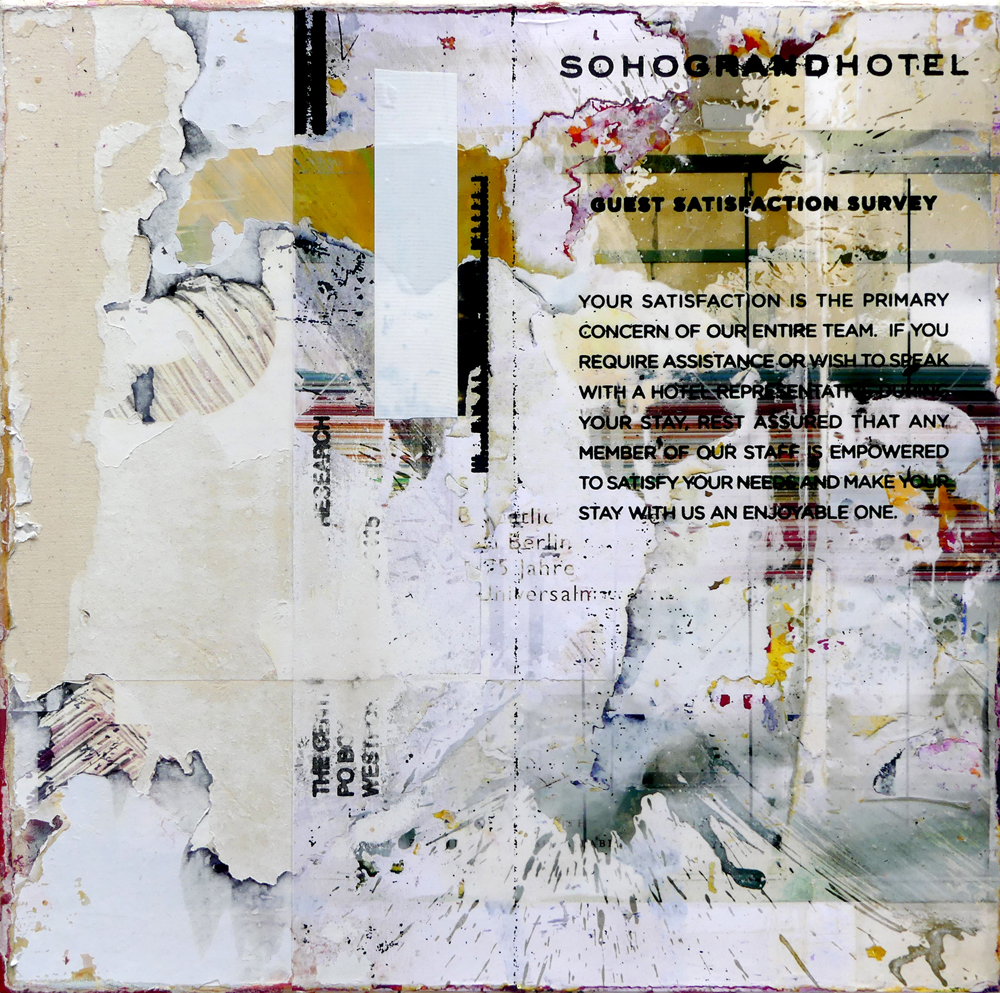The contemporary city (New York) and places like hotels are visible today as an accumulation of cultural signs and symbols. Stripped of personal effects and the usual clutter that defines who we are, a hotel room can become a kind of creative retreat, a blank canvas for personal inspiration, a border between the inside and the outside. The hotel is forever in a state of flux, a room is never yours to own— you can always get up and leave. The simultaneity of being inside and outside, of absence and presence, creates a sense of ambivalence. It is this type of ambivalence that gets layered into relationships of all kinds, and these layers are echoed in Peter Vahlefeld’s paintings. Using strong gestures and the physicality of paint, he explores the relationship between the image of the hotel, the reality of the paint and how they influence each other. Photographs of room textiles, patterns or readymade material of stationery with logos of the hotels printed on shoe cleaning tissues, baggage tags, bar and restaurant receipts are the subject matter at the beginning.
How much, in the end, do you want to recognise in that which is superficially representational? The visual volume of logos and text is quietly, inconspicuously removed by layers of paint and layers of prints, their immaculate smoothness is broken by fabrics, cracks, grids, notches, blurring and overpainting. While letters and numbers, as means of language-based expression, may have initiated the procedure of processing, they loose the initial meaning, and the significance now restricts itself to that of signs within a set space. Thus the work is simultaneously abstract and representational.
The painting starts playfully, according to a mood for a sensation or just to get rid of the content. Usually the first move will be painted over or painted out. Moves and counter-moves are initiated by similar violations. It is just decision after decision—an ongoing process of putting something onto canvas and then editing it, then putting something down and editing it again, updating Rauschenberg’s antiformalist handling of painting as a flat surface on which signs of various origins and meanings can be piled up. The making itself leads the way and the image is the manifestation of this process, beyond logic just looking for the poetry of a stay.
